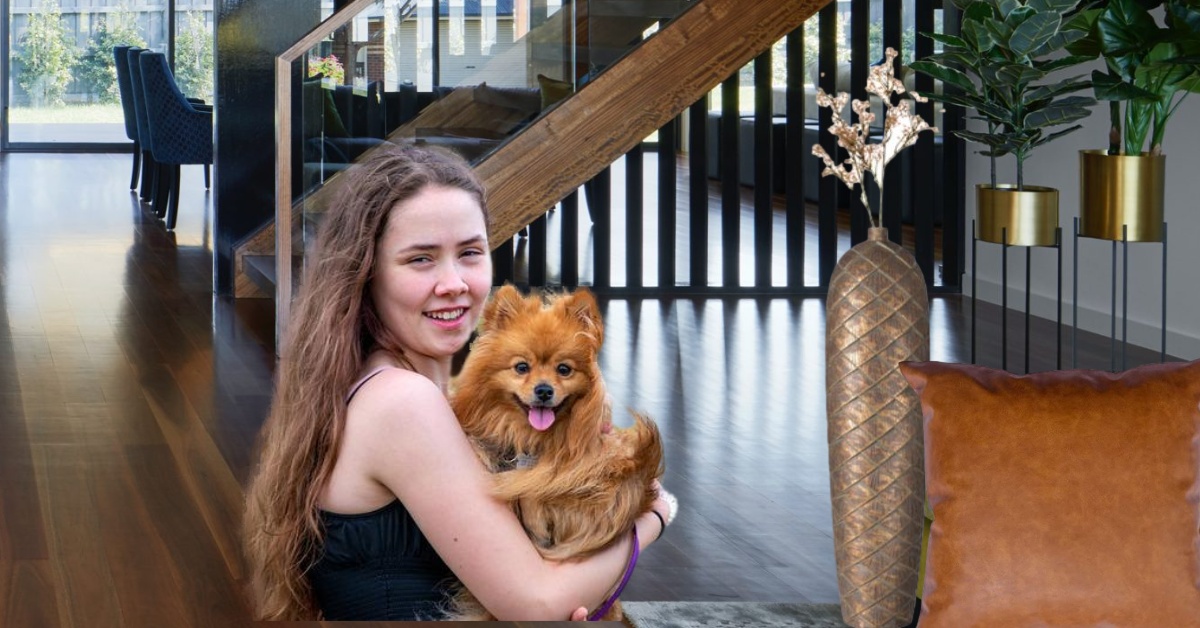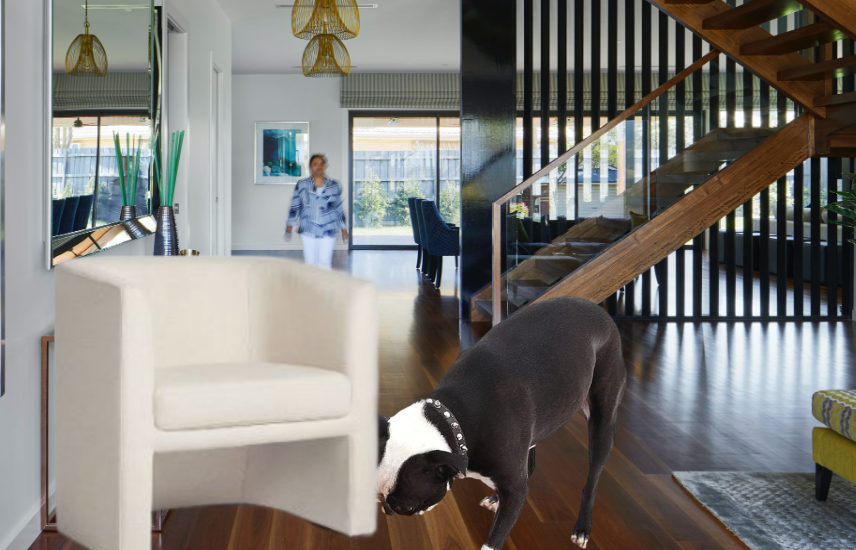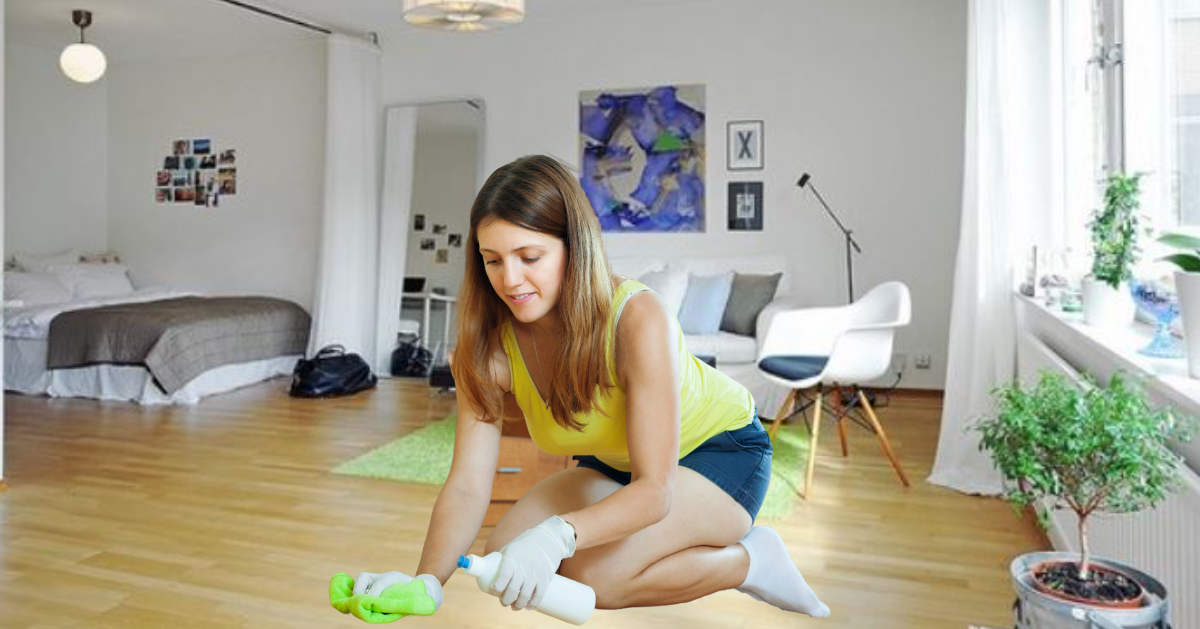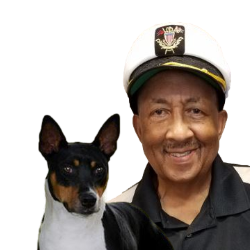This how to train dogs to pee outside post may contain affiliate links. Learn more on my Affiliate Disclosure page.
How to train dogs to pee outside if you are tired of cleaning up messes inside your home whenever your furry friend needs to relieve themselves?
It's time to stop indoor accidents and train your dog to pee outside! Teaching your pup this essential skill is beneficial for maintaining a clean living space and promotes their overall well-being.
Discover an array of practical techniques and strategies in this article that will turn training your furry friend to pee outdoors into a piece of cake. Get ready to say goodbye to messy floors and hello to a well-trained canine companion!
Why How To Train Dogs To Pee Outside Is Important
Training dogs to pee outside correctly will ensure a well-behaved and happy pup and promote a safe and clean environment for you and your furry friend.
When you do not correctly train your dog to pee outside, they may relieve themselves inside the house, resulting in unpleasant odors, ruined carpets, and constant cleaning.
Teaching them the appropriate behavior from an early age establishes a routine to prevent accidents or unwanted messes indoors. Furthermore, proper dog training builds trust and strengthens the bond between you and your pet.
Dogs are intelligent creatures who thrive on structure and guidance. When you invest time in training them to pee outside consistently, you communicate expectations clearly and establish yourself as their leader.
This mutual understanding creates a sense of security for your canine companion while also providing you with peace of mind, knowing that they are safe and responsible regarding their bathroom habits.
In addition to hygiene benefits, properly trained dogs often experience improved mental stimulation as they regularly exercise outdoors during potty breaks. This physical activity helps keep their bodies healthy while stimulating their senses with new sights, scents, and sounds.
Taking physical activity moments together allows for bonding time between owner and pet while reinforcing positive habits through praise or rewards during successful outdoor bathroom trips.
Ultimately, by investing time into proper dog training techniques for peeing outside, you create an environment where pet parents and pets can thrive happily together.

How To Train Dogs To Pee Outside Understand Natural Instincts
How to train dogs to pee outside is understanding their natural instincts and behaviors is crucial when training dogs to pee outside. Dogs are instinctively clean animals who prefer not to eliminate where they eat or sleep.
By recognizing this instinct, we can use it to our advantage during their training process. Establishing a designated bathroom area outside will help them associate that particular spot with elimination, reinforcing that peeing inside the house is unacceptable.
Moreover, dogs have an innate desire to mark their territory. This behavior stems from their ancestors' pack mentality and serves as a form of communication with other dogs in the area.
Understanding this instinct allows us to utilize marking behaviors during outdoor training sessions. You reinforce positive habits by encouraging your dog to keep boundaries like trees or bushes in your designated bathroom area while allowing them to engage in natural behaviors.
Finally, it's important to remember that consistency is critical when working with a dog's instincts and behaviors.
Dogs thrive on routine and predictable patterns by setting a regular schedule for meals and bathroom breaks. When you align yourself with their natural routines, how to train dogs to pee outside is easier.
This consistency will also ensure they develop strong associations between specific cues or commands and going potty outside.
Learn How To Read Dog Body Language
Understanding dog body language is essential when training your furry friend to pee outside. A typical behavior you may notice is when dogs sniff furniture or other objects in the house.
While it may seem like a peculiar habit, sniffing furniture is a way for dogs to gather information about their environment. They can learn about other animals by analyzing scents, marking territory, and detecting potential threats.
So, next time you catch your pup sniffing away at the couch, remember that it's just their way of getting familiar with their surroundings.
To use this behavior as part of your potty training routine, remember when your dog sniffs around before needing to go outside. You can be sure your dog is seeking an appropriate spot to relieve themselves.
If you notice them consistently showing this behavior before eliminating indoors, gently redirect them toward the designated outdoor area instead. Over time and with consistent reinforcement, your puppy will associate sniffing with going outside to pee.
By understanding how dogs communicate through body language and taking advantage of their natural instincts, such as sniffing furniture, you can successfully train them to pee outside. Remember that patience and consistency are essential in any training process!

Understanding and respecting our furry companions' natural instincts and behaviors can create an effective training strategy that promotes successful outdoor peeing habits while fostering a healthy bond between humans and canine companions.
Establish A Consistent Routine For Bathroom Breaks
Establishing a consistent bathroom break routine is crucial for training dogs to pee outside. Dogs like a structured schedule will help them understand when and where to do their business.
- Start by taking your dog out first thing in the morning, after meals, and before bedtime. By consistently taking them to the same spot each time, you create a familiar scent association that signals it's time to go potty.
- Another helpful tip is to reward your dog every time they successfully pee outside.
- Positive reinforcement strengthens the connection between going outdoors and receiving praise or treats.
- However, it's essential to remember that accidents may still happen during training. Instead of scolding your furry friend for mistakes indoors, focus on redirecting their behavior by immediately bringing them outside to finish their business.
- Consistency and patience are critical factors in successfully establishing a bathroom routine for your canine companion.
- In addition to timing and reinforcements, body language can also play a unique role in training dogs to pee outside consistently.
- Pay attention to signs that indicate when your dog needs to go—restlessness or sniffing around may suggest that nature is calling. Learning to interpret these cues allows you to anticipate bathroom breaks accurately and avoid accidents inside the house.
Remember that how to train dogs to pee outside thrive on structure, so creating a consistent routine for bathroom breaks benefits you as an owner and helps maintain harmony within your household.
How To Train Dogs To Pee Outside Using Positive Reinforcement
When teaching how to train dogs to pee outside, positive reinforcement is a powerful tool that can lead to success. Instead of scolding or punishing your dog for accidents indoors, focus on rewarding their desired behavior.
Every time you witness your dog peeing in the designated outdoor spot, shower them with praise and treats. Not only does this reinforce the behavior you want, but it also creates a positive association between going potty outside and receiving rewards.
Another helpful tip is to establish a consistent routine for bathroom breaks. Dogs thrive on predictability, so try taking them out at the exact times daily. You're setting clear expectations and making it easier for your four-legged companion to develop a routine themselves.
Be patient, though - all dogs are different and may require varying lengths of time before they understand where they should do their business.
Remember that how to train dogs to pee outside consistently is critical when using positive reinforcement for successful outdoor peeing.
Celebrate each victory enthusiastically, and reward immediately after your dog finishes its business outside. With time, patience, and positivity, you'll be well on your way to having a housebroken pup who knows where to go when nature calls!
How To Deal With Accidents
Accidents are bound to happen when you train your dog to pee outside. It can be frustrating, especially when you've spent so much time and effort trying to instill the desired behavior. However, it's crucial to remain calm and composed in these situations.
Dogs rely on your guidance and cues, and getting upset or angry will only confuse them further.
Instead of dwelling on the accident, redirect your dog's attention to the proper behavior.
Always take your puppy outside immediately after an accident occurs. And show your puppy the bathroom spot for relieving themselves. Using positive reinforcement methods like praise or treats will help reinforce the idea that going outside is desirable.
When mistakes happen, it's important not to excessively blame yourself or your furry friend. Accidents are a normal part of the learning process for dogs (and humans, too).
Instead of dwelling on what went wrong, use these moments as opportunities for growth - learn from them and adjust your training approach if necessary.
Consistency and patience are key; with time and perseverance, accidents will become less frequent until they eventually become a thing of the past.
How To Clean Up Accidents And Mistakes
When it comes to training dogs to pee outside, accidents are bound to happen. Urine and feces stains and odors can be unpleasant and stubborn to remove. Luckily, enzyme cleaners can be your secret weapon in this battle against the mess left behind by our furry friends.

Enzyme cleaners work by breaking down the proteins found in urine or feces stains. By doing so, they eliminate the odor source and prevent bacteria from multiplying.
To clean up urine or feces stains effectively, start by blotting up as much of the mess as possible with paper towels or a cloth. Then, apply the enzyme cleaner liberally over the affected area and allow it to sit for at least 15 minutes before blotting it up again.
One important tip is to avoid using any cleaning product that contains ammonia when dealing with urine stains.
Since dog urine already contains ammonia, using an ammonia-based cleaner will only intensify the smell and make it even harder for your furry friend to resist going back to that spot again.
Enzyme cleaners are a safe and effective choice as they neutralize odors without leaving behind harmful residues or overpowering artificial fragrances.
How To Crate Train A Puppy To Prevent Accidents
- Start by choosing the right crate size for your puppy – one that allows them enough space to stand, turn around, and lie comfortably.
- Crate training means you must be consistent and establish a routine.
- Take them outside immediately after releasing them from the crate so they can potty in their designated spot.
- Remember, accidents are bound to happen during the early stages of training, but avoid scolding or punishing your puppy if you catch them in the act.
- Instead, redirect their attention by saying outside or using a specific command that signals it's time for a bathroom break.
- Incorporating playtime and exercise into your puppy's schedule ensures they can release pent-up energy before going into their crates for extended periods.
Puppies have limited bladder control, so it's important not to keep them crated for too long without potty breaks—generally no longer than their age in months plus one hour (e.g., three months old equals four hours maximum).
Top Product Picks For Potty Training
Potty training for first-dog parents can be a challenging process for both dog owners and their furry friends. Several products on the market can make this journey a little easier.
- First up on our list is the Potty Training Spray. This magic liquid is an enticing scent that encourages dogs to eliminate in specific outdoor areas. Spray it onto your desired spot, and watch your pup quickly learn where to do their business.
- Next, we have Doggie Doorbells – a brilliant invention for those who live in apartments or houses without easy access to an outdoor area. These bells hang from the doorknob equipped with a button that dogs can easily press with their nose or paws.
By teaching your dog to ring the bell whenever they need to go outside, you enable them to communicate their needs effectively.
- Lastly, let's talk about Potty Training Pads. These absorbent mats are perfect for apartment dwellers or those going through rainy seasons when outdoor potty breaks may not be ideal.
With built-in attractants that entice dogs to use them, these pads mimic the feel of natural grass while keeping messes contained.
Potty training your furry friend will become a breeze with these top product picks at your disposal! Remember, consistency and positive reinforcement are key throughout this process.
K9 Training Institute Free Workshop
The K9 Training Institute offers a free workshop where you can learn firsthand their effective training methods.
The Free Workshop emphasizes building a solid bond between you and your pup. They explain how to apply positive reinforcement techniques that make learning enjoyable for dogs and their owners.
Does your dog tug on its leash, bark constantly, and won't come when called? Sign Up and get the FREE Obedience Training Workshop Now!
Conclusion How To Train Dogs To Pee Outside
In conclusion, how to train dogs to pee outside it is essential to acknowledge that patience and consistency are the keys to successfully training dogs to pee outside.
Many dog owners may become frustrated and give up easily when progress seems slow or non-existent. However, understanding that each dog is unique and will learn at their own pace can make a significant difference in achieving the desired results.
Consistency in training methods and schedules goes hand in hand with patience. Dogs thrive on routine, so maintaining a consistent potty schedule reinforces the concept of peeing outside.
Regular walks after meals and before bedtime allow them to eliminate outdoors rather than indoors. Being patient throughout this process is crucial as accidents may occur along the way – it's essential not to get discouraged but instead offer positive reinforcement for desired behaviors.
Furthermore, it's worth noting that success in dog training goes beyond simply teaching them where to pee; it strengthens the bond between owner and pet through trust-building exercises.
Training sessions serve as valuable bonding moments where your dog learns to rely on you for guidance while you reinforce your role as their trusted leader.
Embracing patience and consistency throughout this journey will lead to successful potty training and foster a harmonious relationship with your furry companion built on mutual respect and understanding.
Learn about how to train dogs to pee outside at the American Kennel Club about this topic.














